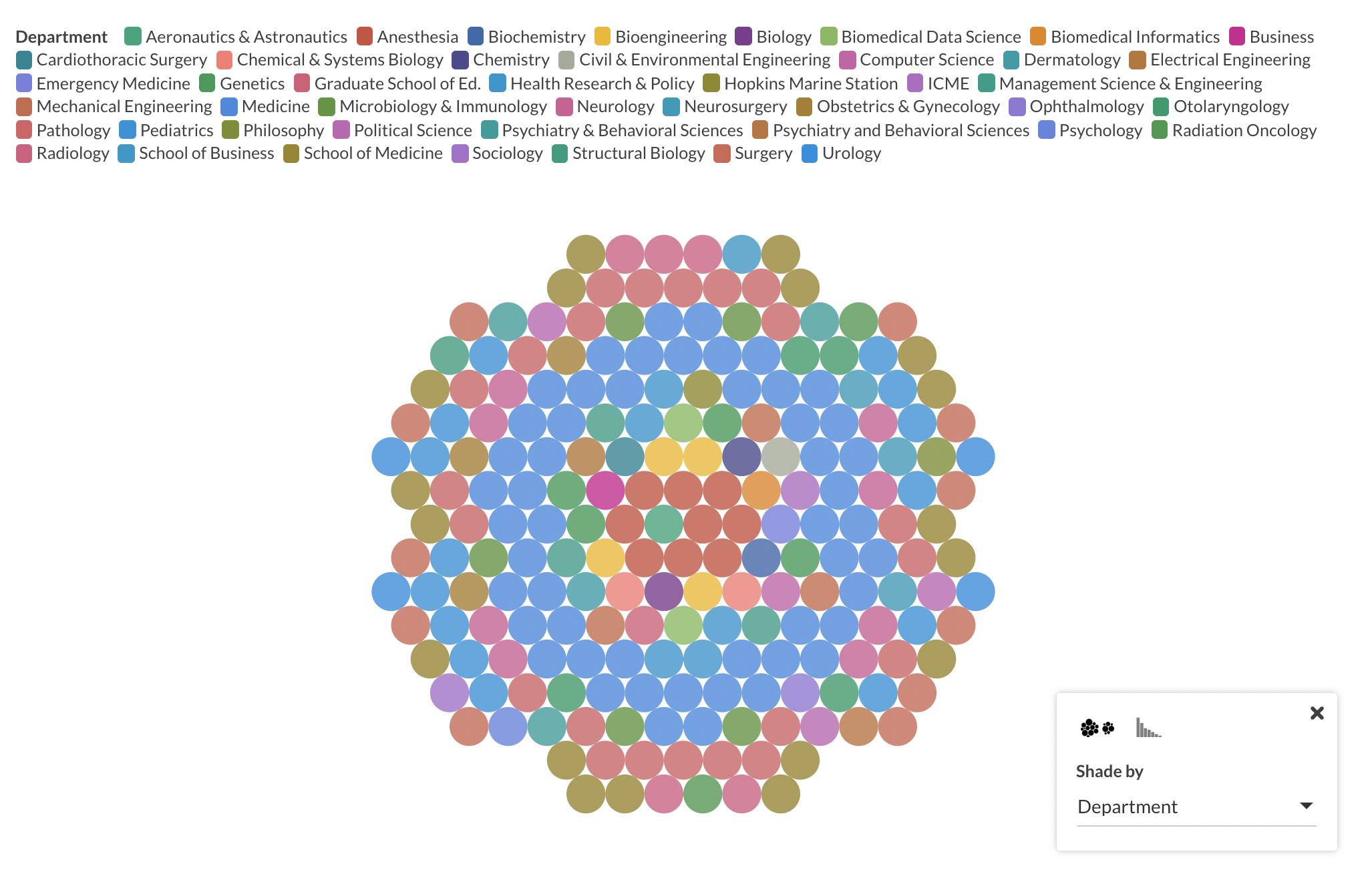Today marks the two-year anniversary of the first CDC-confirmed COVID-19 case in the U.S. Since the start of the pandemic, academic institutions have made major contributions to COVID-19 knowledge, as illustrated by the 185,000 peer-reviewed articles published to date. The Daily’s data team analyzed Stanford’s contribution to this vast COVID-19 research literature using a PubMed database search. With support from staff at the Lane Medical library, we identified all COVID-related research articles with a corresponding author at Stanford and examined these for trends in departmental affiliation and topic.
Publication trends by department
Researchers at Stanford have published over 210 primary research articles since the start of the pandemic according to The Daily’s search criteria. For context, this is roughly one-third of Harvard’s COVID-19 research output and six times that of Berkeley’s. These articles were authored by researchers including undergrads, grad students, post-docs and professors, across 46 departments. The Department of Medicine contributed the greatest number of primary articles with 55 at the time of the PubMed search.
Each dot represents a published article. Hover over a dot to obtain additional article metadata including the title, author list and journal of publication. Use the filter in the bottom right to group articles by fields like primary department of author or publication year.
Publication topic breadth
Articles covered a wide range of topics from the binding efficiency of different spike protein variants, to the impact of the COVID-19 pandemic on postpartum contraception planning, to the exploitation of the pandemic by e-cigarette makers. The Daily team read the abstract of each published article to identify the primary topic and create short-hand categorizations. The most common primary topics included ‘diagnostics’ with 14 articles, ‘epidemiology’ with 9 and ‘medical training’ also with 9 articles.
In the word cloud above, text size corresponds to primary topic frequency.
The volume and breadth of these publications demonstrate that academic institutions, including Stanford, made substantial contributions to COVID-19 knowledge across a wide range of disciplines. Given the months-long delay between project completion and publication typical in most disciplines, there are likely many forthcoming articles still somewhere in the pipeline.
Secondary literature trends
Stanford researchers also contributed over 53 ‘secondary literature’ articles — publication formats that enable authors to share personal opinions and perspectives rather than original research findings. These include commentaries, essays and perspective pieces identified through the PubMed database search and may or may not be peer reviewed. Secondary literature article topics ranged from the gendered effects of COVID-19 on young girls in regions of conflict, to departmental responses to the intersectional challenge of COVID-19 and racism, to refugee access to COVID-19 vaccines in Lebanon. Authors spanned 16 departments with the greatest representation from Anesthesia. The most common primary topics in the secondary literature included ‘healthcare worker experience’ and ‘medical guidelines’ with four articles each, and ‘medical training and education’ and ‘PPE’ with three articles each.
In the word cloud above, text size corresponds to primary topic frequency.
Academic publishing
While these contributions reflect the vigor and rapid pace at which Stanford researchers mobilized to fill critical COVID-19 knowledge gaps, they also reflect COVID’s impact on the nature of academic publishing. According to a Nature analysis, while roughly 6% of PubMed articles were related to COVID-19 in 2020, the number of submitted articles in any subject increased substantially. The pandemic also spurred huge increases in the use of preprint servers such as medRxiv, where researchers can post articles prior to peer review. Peer review times also decreased dramatically — the average time from preprint to publication decreased by nearly a month for COVID-related articles — but this came at the expense of lengthier peer review times for other subjects. Whether this heightened research output and pace can be sustained into year three of the pandemic remains to be seen.
